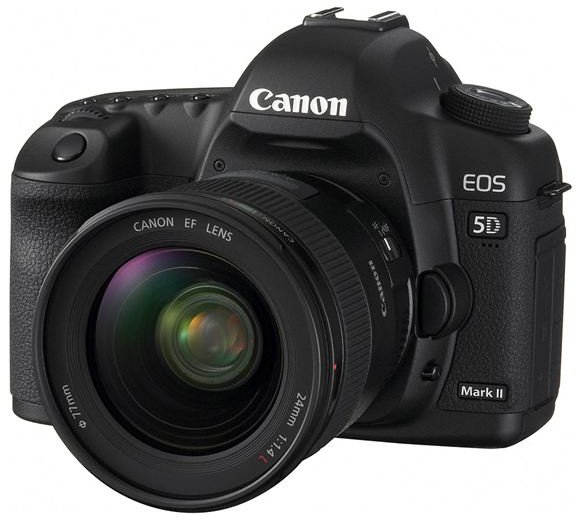Tips for DSLR Filmmaking with the Canon EOS 5D Mark II and Similar Cameras
The Mark II Revolution
Independent and digital video filmmaking is under a revolution. The evolution of this type of production went from light weight 16mm cameras, to video, to DV Cam, and now to HD formats. The cameras themselves followed the train of other motion cameras, separating themselves very distinctly from still cameras. This was all until the Canon EOS 5D Mark II. With the release of the sequel to the original, Canon allowed full 1080p HD video and a sensor larger than that used in 35mm film. The shallow depth of field gives a beautiful image quality that is much more in line with the appearance of traditional film than other forms of HD cameras. Today there are more cameras, such as the Lumix GH1, that also give fantastic image quality at a much smaller size and price. Here are a few tips for DSLR filmmaking on these new DSLR cameras.
Audio
The first thing that you have to remember is that the Canon EOS 5D Mark II, or any camera used in DSLR filmmaking, is not going to be reliable for recording audio in any form. On the larger HD cameras, such as the Panasonic HVX or HPX, you have both an on-board microphone and the ability to run external microphones into the camera using simple XLR cables. Though there is going to be on-board audio recorded quite often, it will always be so low quality that it will never be usable. What you will need to do is return to the days of non-sync audio that was used along with 16mm film and record on a separate digital audio recorder, such as a 702 kit or a Zoom. You will then have to sync the audio with the video during post-production, which means that a clapboard is necessary at all times.
Focus
The Canon EOS 5D Mark II, along with many of the other cameras used in DSLR filmmaking, have serious problems with depth of field. Specifically, you will often see footage recorded on the DSLRs that have subjects coming in and out of focus. The best way to deal with this limitation is to resort to very standard film production procedures for pulling focus and lighting correctly. You will need to have several lens options with you so that you can adjust the focus, and you should try both natural and artificial light. Having an assistant camera person can really help, even though the camera in DSLR filmmaking is so small that you may not want to have two people working on it at once.
Storage Space
The Canon EOs 5D Mark II cannot hold more than 4GB of video files, and in general the storage cards used are small. In comparison to something like the Panasonic P2 card, they are tiny and you cannot expect to make it through full production days without dumping the footage to a hard drive and clearing out the on-board storage. This means that you will need to keep either several cards with you during a production day or a computer with you, which means that you may want someone on media management.
References
Author’s own experience.
Canon USA: Product Specs https://www.usa.canon.com/cusa/consumer/products/cameras/slr_cameras/eos_5d_mark_ii#Specifications
